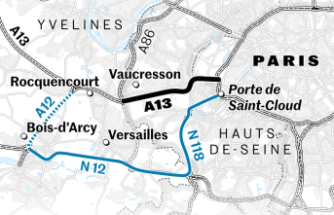The Federal Reserve has raised interest rates by a quarter of a point, leaving them in a range that goes from 4.75% to 5%. The increase has been in line with what was expected by the market, and confirms the intention of the central bank to seek a certain balance on the tightrope along which monetary policy walks and that has on one side the abyss of hyperinflation and on the other that of a banking crisis that began in several of the medium-sized entities in that country and that has spread to Europe, where it has caused the fall of the Swiss banking giant Credit Suisse.
The increase is very probably less than what it would have been had there not been a banking crisis and its effect is also moderated by the commitment of the US State and the measures of the Federal Reserve itself to ensure the position of the banks, which which in practice introduces more money into the economy.
The rise is the same as that of the beginning of February, but less than the half point of December, which in turn was also below the four three-quarter points that preceded it. It is highly probable that, under normal circumstances, the 'Fed' would have opted for a half-point rise given the apparent stagnation in the reduction of inflation. However, the weakness of regional banks could have played a determining role in making the rise less. At the same time, the Federal Reserve has already created a funding 'window' for those banks that amounts in effect to a bailout or, as JP Morgan and Deutsche Bank have called it - the biggest banks in the US and Germany, respectively.' a 'light quantitative easing', in reference to the purchase of bank bonds by the Fed' carried out in the last decade to inject money into the economy.
It is a situation that could be defined as a world turned upside down. Supposedly, increases in interest rates increase the financial margin of banks, that is, the difference between the interest they pay to the State to obtain financing and the interest they charge their clients for the loans they give them. And that benefits, especially, the medium-sized banks, which do retail operations, and are not dedicated to investing on Wall Street. And in this crisis it is those retail banks, and not the giants that operate in the markets, that are crashing. The reason is that these banks have so much money that they don't know what to do with it, and they have invested much of it in Treasury bonds, the safest financial instrument that exists. Now, with the rises in official rates, the bonds have lost value, and these entities find themselves with capital losses.
The increase occurs after the US authorities have launched a series of measures to contain the spread of the crisis. The last one came yesterday, Tuesday, in a speech by the Secretary of the Treasury, Janet Yellen, before the Bankers Association of the United States, the main employer in the sector. In it, Yellen implied that the State is willing to take over bank deposits over $250,000 (230,000 euros), which is the limit covered by the Federal Deposit Insurance Corporation (FDIC). , the equivalent of the Spanish Deposit Guarantee Fund. Already in the case of Silicon Valley Bank (SVB), which was the entity whose intervention unleashed the crisis, and that of Signature, which fell two days later, the authorities guaranteed all deposits, regardless of their size.
On Sunday, the New York Community Bank announced that it would acquire the Signature, but the SVB still does not have anyone who wants to take over its assets, despite the fact that the State would keep those with the most risk.
According to the criteria of The Trust Project












